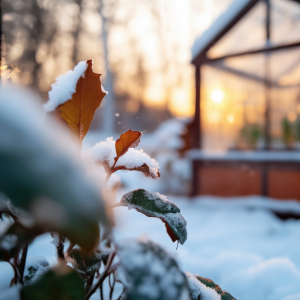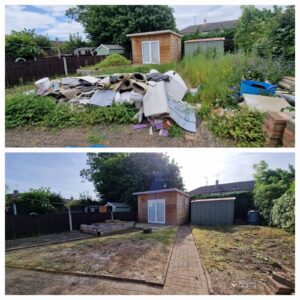Maintaining a healthy lawn involves proper mowing, watering, and care throughout the year. However, when temperatures drop below 5°C (41°F), questions arise about whether it’s safe or even beneficial to cut the grass. Understanding how cold weather affects your lawn can help you make informed decisions and avoid damaging your turf during colder months. Consider the importance of cutting grass in cold weather as you plan your lawn care.
Why Temperature Matters for Grass Cutting
Cutting grass in cold weather can be tricky, but with the right techniques, you can maintain your lawn’s health.
Grass grows slower as temperatures decline, and when it dips below 5°C, most types of grass enter a dormant phase. During dormancy, the grass focuses on conserving energy rather than growing. Cutting the grass in cold weather at this stage can stress it, hinder its ability to recover, and make it more vulnerable to frost damage and disease.
Potential Risks of Mowing Below 5°C
- Weakened Grass Blades
Cutting grass in cold conditions removes vital leaf surface area, which is essential for photosynthesis. This weakens the grass, making it harder for it to recover and thrive when temperatures warm up. - Frost Damage
Mowing in frosty conditions can crush or tear grass blades, leaving them prone to splitting and discolouration. These damaged areas are more susceptible to fungal infections and other diseases. - Soil Compaction
Cold, wet soil is more prone to compaction, especially under the weight of lawnmowers. Compacted soil reduces oxygen flow and impairs root health, leading to long-term damage to your lawn. - Uneven Cuts
Grass that is damp or frozen may not stand upright, leading to uneven mowing. This not only affects the appearance of the lawn but can also create patches of scalped grass that struggle to recover.
When Should You Mow in Cold Weather?
While mowing should generally be avoided when temperatures drop below 5°C, there are exceptions. Follow these guidelines to minimize risks if you are cutting grass in cold weather:
- Ensure the Grass is Dry
Only mow if the grass is dry and free from frost. Wet or frozen grass is more likely to sustain damage during cutting. - Raise the Mower Height
Set your mower to the highest setting to avoid cutting too much of the grass blade. This helps the grass retain energy and protects it from stress. - Mow Only When Necessary
Grass grows very slowly in cold weather, so frequent mowing isn’t needed. Only mow if the grass exceeds 3–4 inches in height and conditions are favorable. - Use Sharp Blades
Sharp mower blades ensure clean cuts and reduce the risk of tearing grass, which can lead to disease. Dull blades are particularly damaging in cold conditions.
Cold-Weather Lawn Care Alternatives
If mowing isn’t advisable, focus on other maintenance tasks to prepare your lawn for winter and ensure it remains healthy:
- Remove Leaves and Debris
Keeping the lawn clear of leaves and debris prevents suffocation and reduces the risk of fungal diseases. - Aerate the Soil
Aeration improves soil drainage and ensures that roots receive sufficient oxygen, even in colder weather. - Apply Winter Fertilizer
Use a winter-specific fertilizer to provide essential nutrients that strengthen grass roots during dormancy. - Avoid Foot Traffic
Limit walking on the grass when temperatures are below 5°C, especially if there’s frost, as this can damage the turf.
What to Expect When Spring Arrives
If you’ve avoided cutting grass in cold weather and followed proper winter lawn care practices, your lawn will be well-prepared for healthy growth in the spring. As temperatures rise above 5°C, grass will begin growing more actively, and you can resume regular mowing.
When considering the best practices for cutting grass in cold weather, it’s essential to understand the factors at play.
Conclusion
Besides knowing when to mow, you should also be aware of the benefits of cutting grass in cold weather, which can include improved lawn health in the spring.
Cutting grass in cold weather, especially when the temperature is below 5°C should be approached with caution. While occasional mowing may be necessary under specific conditions, it’s generally better to prioritize other maintenance tasks to protect your lawn. By understanding the needs of your grass during colder months and adjusting your care routine accordingly, you can ensure a healthy, vibrant lawn year-round.
Ultimately, the experience of cutting grass in cold weather can lead to a healthier lawn as long as proper techniques are followed.




